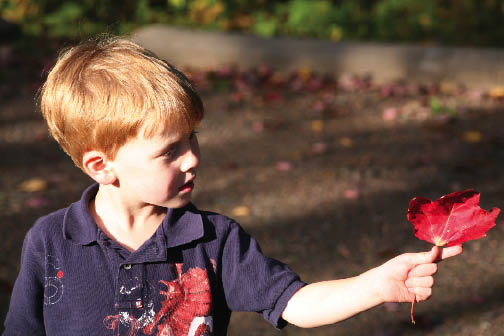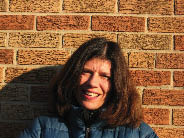Thoreau's Legacy (19 page)
Authors: Richard Hayes

The Last of the Carnivores
Gabriel Filippelli
TO STAND ON TOP OF A DUNE RIDGE IN THE INDIANA
Dunes National Lakeshore is to straddle the natural and industrial worlds. Several hundred feet to the north is the sandy shoreline of Lake Michigan, one of the Great Lakes, which contain most of the world’s fresh water. Upwind to the west is the heart of U.S. steel production, with the smokestacks of Gary and Hammond emitting a gray-black cloud that languidly drifts overhead. Just to the south, between serene dune peaks, is a shallow swale that contains some of the most exotic plants in North America.
Home to a panne ecosystem—an exceedingly rare environment comprising over 1,400 unique plant species—these coastal dune lands along the shores of Lake Michigan were formed thousands of years ago, after the final retreat of the Laurentide ice sheet. Human-caused erosion is evident here, but these dunes are relatively resistant to everything except bulldozers. Unfortunately, the fragile panne ecosystems that they enclose are not so resilient.
It was here that I first introduced my son to that greatest object of fascination for young boys—carnivorous plants! Insect-eating pitcher plants are a characteristic panne species, one my son learned about when studying the ecosystems of Indiana in grade school. Seeing his excitement as he raced down the dunes and knelt, brushing and prodding the pitcher plants to see their response, reminded me of my own fascination with nature, which propelled me into science, and of
the power of nature to teach about
complexity and interactions
and absolute wonder.
Being able to share this wonderful world with my son, while contrails from O’Hare Airport and smoke from a nearby steel plant colored the sky, gave me a sense of hope about the world. But this magical place may very well be among the ever-lengthening list of unique environments that vanish from the earth, victims of global climate change and associated changes in temperature and rainfall.
The invasion of these ecosystems by cattails and Egyptian reeds over the past twenty years is what brought me to the dunes in the first place, to solve a puzzle. How did this ecosystem withstand more than one hundred years of industrial pollution, including brutal assaults on the atmosphere before the Clean Air Act, when the skies were regularly clouded by smokestack haze? And now, when the skies are clearer, why did it begin to succumb to invasion by exotics? Could the recent rapid drop in the level of Lake Michigan, due in large part to global climate change, be the cause?
That this fragile and beautiful environment persisted in the face of extreme industrialization gave me hope for the resilience of nature. But the fear that it is rapidly disappearing through the insults of global climate change makes me despair for my children’s children, who may never be able to meet this hidden world with its carnivorous plants nestled within rolling sand dunes, just a twenty-five-minute drive east of Chicago.

Gabriel Filippelli
is a professor and chair of the Earth Sciences Department at Indiana University–Purdue University Indianapolis (IUPUI). He lives in Indianapolis with his wife and their three children.
My Grandson
Kate Crowley
I want my grandchildren to know I care desperately about the world they will inherit, a world I want them to love as much as I love them. It seems an overwhelming task to curb global warming, but
each day I try to do at least one thing—
writing to an elected official, turning off some lights, walking or biking instead of driving, talking to others—to demonstrate my concern and willingness to change the trajectory we are on.

Kate Crowley
is a naturalist and freelance writer who lives on twenty acres outside of Willow River, Minnesota, with her husband, Mike Link.

My grandson, Ryan Carlson, in Banning State Park, Minnesota. Photo by Mike Link.
Eating Healthy for
the Planet
Una McGeough
LATELY MY EFFORTS TO DO THE RIGHT THING (FOR
my kids, for the planet) have focused on food. It started with a cake—a pumpkin spice layer cake. This cake was special, beyond the beaten butter, grated nutmeg, and sifted flour. The extra touch was a homegrown pumpkin. We sowed the seed, tended the plant, harvested the pumpkin; then I gutted, peeled, steamed, and pureed it. That hefty but delicate orange squash was folded into the cake batter and baked, giving new meaning to the concept of cooking from scratch.
I love to cook and to eat good food, but my thoughts about food evolved as I read more about the energy used and pollution generated to bring the basics to my kitchen. I’ve worked for many years with organizations promoting renewable energy and energy efficiency. I’ve gaped at the climate-change naysayers and turned my indignation inward: what more can
I
do? I’ve bought compact fluorescent lights and lowered my thermostat and tuned up my bike. But when I thought about food, the question of how to feed my family a nutritious, tasty, economical diet that is good for the planet seemed very complicated.
So we planted a plot in the community garden with room for sprawling pumpkin and watermelon vines. While we harvested lettuce, cucumbers, peas, carrots, basil, and flowers, we marveled at our food: fresh, tasty, homegrown. The new vogue for “healthy-for-the-planet eating” is actually old-fashioned. It’s the small farm, the kitchen garden, the local dairy.
In many places,
local has never gone
out of style.
Locally grown food isn’t shipped thousands of miles, gulping oil, generating pollution, and consuming more than its own caloric value to reach your dinner table. Food grown yourself or by a farmer nearby can be picked when it’s ripest and most flavorful. Think global (warming), act (buy) local (food).
So I try to do the right thing without supporting the long-distance food system, which is the norm. Instead of produce from around the world, I choose Michigan’s fruit whenever possible. When you live in metro Chicago, that’s pretty local. Our aging apple tree yielded a bumper crop this year—what could be more local than pies and applesauce from our back yard? And going to the farmers’ market is a favorite way to spend Sunday mornings.
That pumpkin cake tasted of possibility. At a time when the path to the dinner table is strewn with contamination hazards and prohibitions, from trans fats to tuna, farmed salmon to French toast, there is joy in the abundance of a farmers’ market or your own back yard. Turning the tide on global warming might be more palatable than you think.
As far as doing the right thing for my kids, I’m not sure where local food fits in with regular bedtimes and good schools. But I’ve become convinced that it
is
part of doing the right thing for the planet, and what could be better for my kids than that?

Una McGeough
worked as a small business contractor for the Environmental Protection Agency in North Carolina and led a renewable energy development nonprofit in Ohio. She lives in Skokie, Illinois, with her husband and three sons.
Man Freezes Out Family
Rick Lindroth
Preach the Gospel at all times. If necessary, use words.
—attributed to St. Francis of Assisi
HANGING ABOVE OUR THERMOSTAT IS A NONE-TOO-
flattering photograph of me—hair disheveled, eyes downcast as if I’m being led off to prison—with a headline from our local newspaper: “Man Freezes Out Family for No Reason.” It was a gift … from my children.
Those who enter our home during winter are quick to appreciate the humor. In our household, caring for the earth has priority over many personal comforts. This value has not always been held by every family member. My wife had a choice early on: marry me or someone else. My two daughters, however, had no choice. Which brings me to the point of this essay.
Educational psychologists tell us that people behave according to what they
believe
rather than what they
know.
Changing our behavior requires changing our beliefs. Otherwise, I fear, there is little hope for resolving our climate crisis.
As an ecologist, I speak about the dangers of climate change to school classes, faith-based groups, legislators, and the general public. Although I try to make a compelling case for environmental responsibility, I am not naive about the success of my efforts. Climate-change naysayers, still surprisingly abundant, are rarely swayed. Why? In general, it’s not that they need more facts. What they need is a change of mind—preceded by a change of heart.
Modeling
and
experience
are powerful tools for shaping values and, thus, behaviors. For nearly two decades we modeled for our daughters a lifestyle shaped by concern for the environment: we converted a fifty-year-old house to be energy efficient, commuted to work by bicycle (even during Wisconsin winters), bought energy-efficient appliances, paid a surcharge for wind-generated electricity, planted trees, composted kitchen waste, and, perhaps most noticeable to adolescent daughters, refused to capitulate to a culture of consumption.
We also engaged them in the wonder and challenges of the natural world. While their friends jetted to luxurious vacation destinations, we camped our way around Lake Superior and canoed in the boreal wilderness of Quetico Provincial Park. While their friends experienced the faux summer of indoor water parks, we went winter-camping. All those years I had doubts as to our daughters’ own environmental ethics: the house was always too hot or too cold; recycling was too difficult.
I no longer hold those doubts. Since leaving home, my daughters have become environmental missionaries, setting the pace for roommates and friends. Some of their environmentally conscious practices go beyond my own; they now challenge me.
My wife and I still strive to convince others of the critical need to make lifestyle changes. But we now recognize that our greatest impact comes not from what we say but from our modeling of a consistent earth ethic.
Recently my younger daughter visited us, roommate and bags of compost in tow. Seeing a programmable thermostat on our kitchen table, her roommate quipped: “What happened, did your old thermostat freeze and break?” We laughed. And I smiled: little does she know how her life is about to change.


Kawnipi Lake, deep within Quetico Provincial Park in Canada, is one of my favorite canoeing destinations. Photo by Rick Lindroth.
Rick Lindroth
is a professor of ecology at the University of Wisconsin—Madison. He studies the impacts of global environmental change on northern forest ecosystems.
